A Day in the Life of a Commercial Construction Project Manager
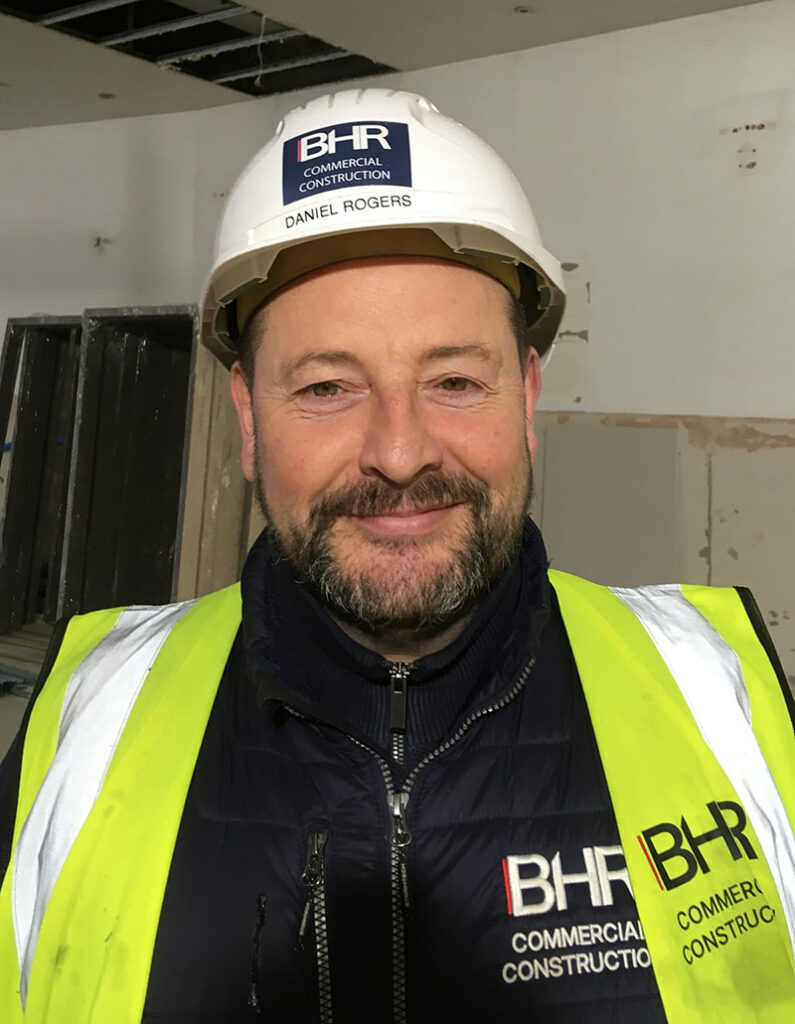
Commercial construction is a dynamic world, where every project requires coordination, precision, and proactive problem-solving.
In this blog post, we’ll take you behind the scenes to explore a typical day for our Project Manager, Daniel Rogers. Dan will tell you he’s no choreographer, but from sunrise to sunset, he’s there to orchestrate the intricate dance of builders, suppliers, and clients.
First thing
Dan’s day begins early – he’s first on site to open up and prep everything ready for when the team arrive. He’s usually there at 7am, but sometimes it’s more like 6. In winter, it’s not even light at that time, but he’s there.
Many of the contractors are up with, or before, the lark – if they are travelling in from a distance they want to avoid the rush hour traffic, which means they turn up not long after Dan has opened the doors.
One of the early jobs is to set up the welfare area. Long gone are the days of construction workers sitting on a girder high up in the air to eat their sandwiches.
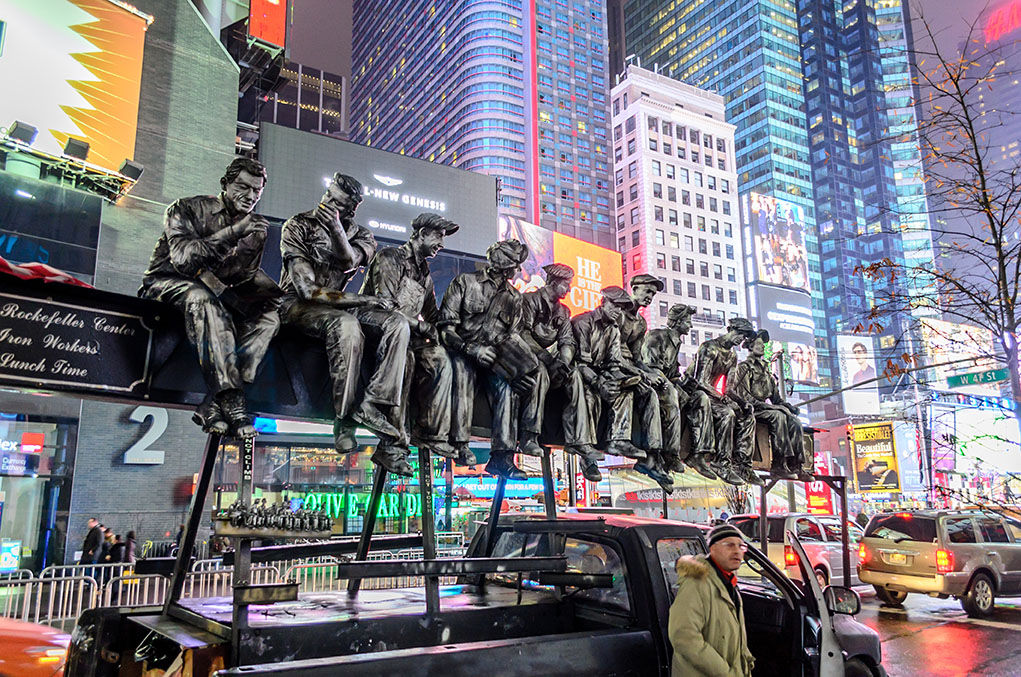
This statue shows the iron workers who helped build 30 Rockefeller Plaza in the 1930s having lunch, sat on a girder. Except the girder was hundreds of feet up in the air. There’s a famous photo of the men dangling high over New York that this statue is based on.
Companies are now required to have an area, off the main site, where the workers can go on their breaks. A kettle, toaster and microwave are essentials, along with a fridge. Comfortable seating and a table to eat at round off the space. And it’s normally at ground level!
The welfare area is where the first aid kit is kept too. BHR have been ahead of the curve for a while in having a defibrillator available. Working with electrical equipment does bring the threat of shocks, and Dan is trained to use all the supplies and equipment they have.
Of course his first responsibility is to help avoid incidents of that type happening at all.
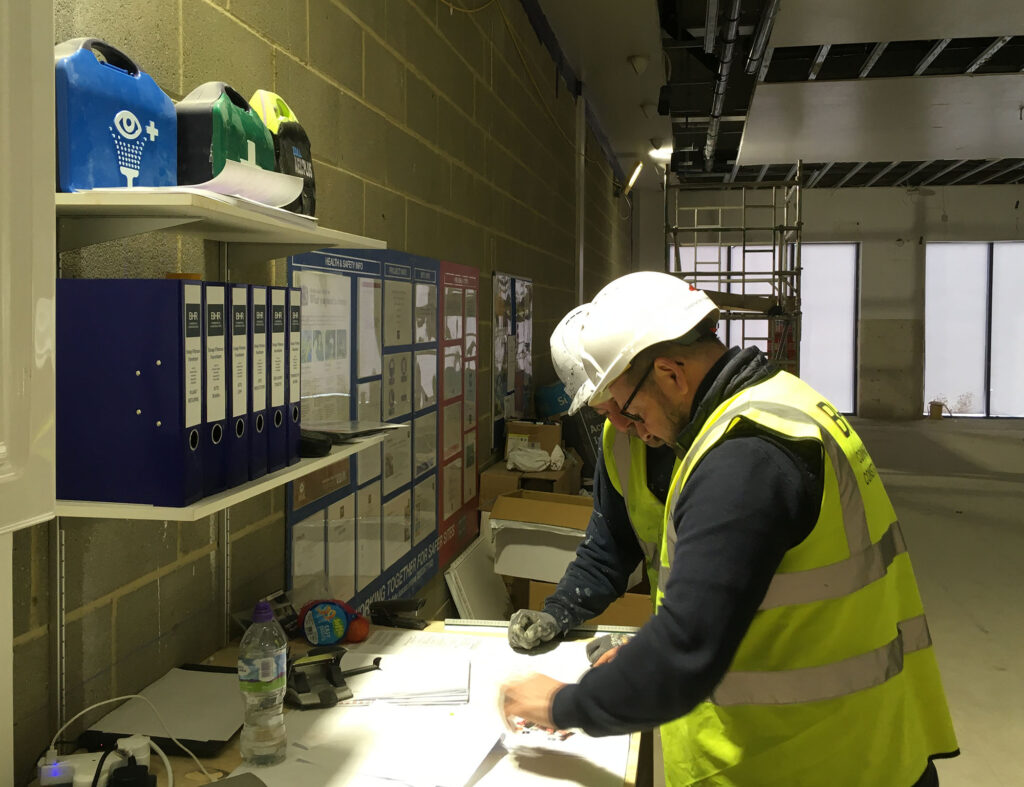
Getting started
When the team is assembled, he runs through the plan for the day, setting expectations and targets to keep the project on schedule. Each contractor knows what is expected of them.
As soon as everyone is briefed and working, he jumps on the laptop to check any new emails. If he can fit in a cuppa, he does, but it’s never guaranteed.
Dan’s expertise covers the language and jargon of the industry – he knows how to communicate with construction insiders, as clearly as he does the general public.
The morning
Many of the tasks Dan faces follow a pattern, but the fact is no two days are the same. Different visitors, deliveries, challenges and triumphs keep him on his toes.
When visitors arrive, he needs to ensure they put their details and signature in the log book. It’s critical to know who is on site at any time.
One thing that is fully predictable – he’ll be dealing with a string of phone calls throughout the day, and will need to check his email regularly.
Clients will be checking on progress, suppliers calling to discuss orders and deliveries, or designers might call with amendments to the spec, which he needs to action immediately. He’ll regularly be in touch with Dirk and the other members of the team to keep them updated, or discuss any issues. That contact and collaboration is critical to the success of the project.
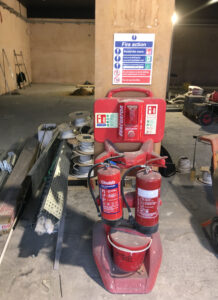
Between calls and messages, Dan patrols the site to ensure all the required health and safety measures are in place and being followed. Busy workers get caught up in their work and although incidents are rare, it’s easy to forget to pick up your hard hat, or put a piece of safety equipment in place.
The guys working with BHR know Dan will jump on anything they miss, so they’re generally very aware and keep themselves safe.
There are several fire kits around the site, positioned as close as possible to any potential flashpoints. They are easily moved around to follow the work.
It’s well known that Dirk in particular likes a tidy site. The supplies and equipment required on a build do not lend themselves to orderly stacking and neat piles. However, keeping things in confined areas, with trip hazards and clutter minimised makes for the safest environment possible.
Lunch
Dan will tell you there’s no such thing for him! The team take their lunch when the job they are working on allows a natural break, so there’s no one time everyone stops.

For Dan it’ll be a sandwich, or something quick while he checks his email again, or completes some paperwork. Fixed lunchtimes or tea breaks are simply not practical on a construction site. For plastering or painting in particular, you can’t stop part way through a wall – it needs to be finished, so that’s when the guys can stop.
The afternoon
As the day goes by, Dan knows he needs to make sure everyone is on schedule to get the required work done. He tours the site, checking in with each contractor, monitoring progress and determining whether there are any issues he can help with.
One of Dan’s skills is forward planning, for which you have to have an eye on the future.
For example, what’s the weather going to be like over the next week or month? How might it impact on the timelines? Is he going to need to hire in additional equipment or people to get them over the line?
Take plastering – once a wall is plastered, it needs to dry thoroughly before it can be painted. And how long it takes to dry will be affected by the weather. A warm, sunny week will see the wall ready quickly. Cold, damp conditions can slow the drying process, which will inevitably impact when the decorators can start their job.
So, in winter, will Dan need to get industrial heaters on site to speed up the drying of the plaster? And how long will that take?
This, and all the other factors that can affect a project have to be part of Dan’s ongoing plan. He needs complete awareness of any incoming challenges, and the foresight to organise the resources to overcome them.
That’s where BHR’s expertise and experience with logistics really comes into its own.
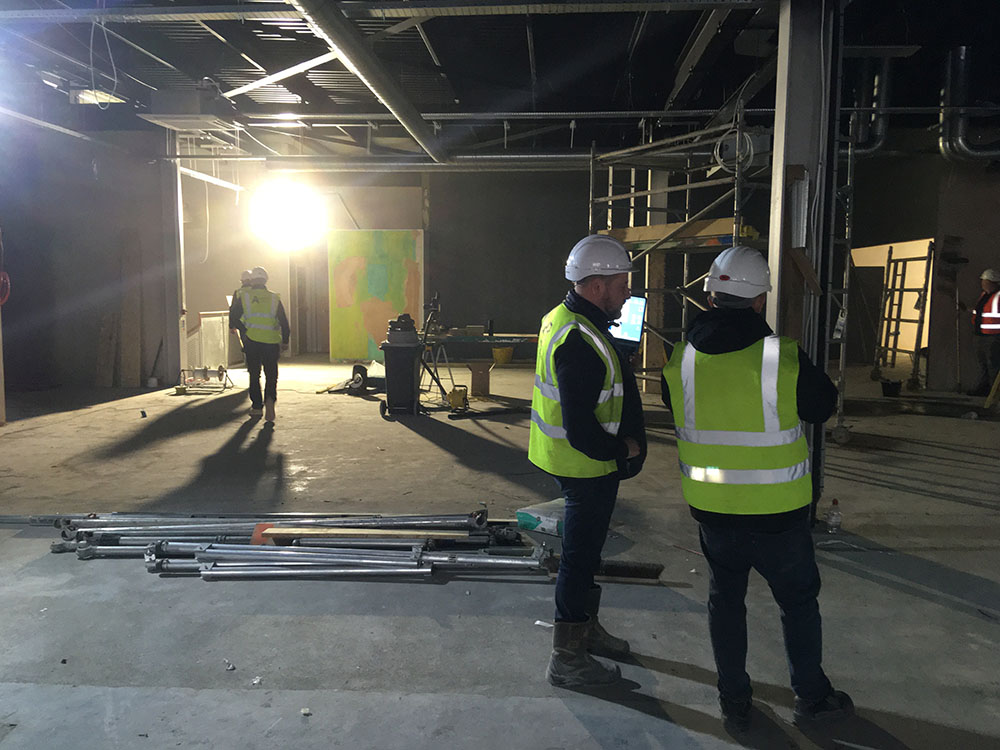
Between them, Dan and Dirk have decades of understanding what can happen to throw a spanner in the works. With that insight, they are able to predict many of the hiccups they may face. And when the unexpected happens, they have the means to assess and overcome the problem.
That’s why they have never overrun on a project, and regularly come in early.
Of course, all this is worked out between yet more calls, messages and emails.
Wrapping up
With the end of the day approaching, Dan needs to check that everyone has completed the expected work. Have there been any issues? Will they impact on the schedules? How can they be overcome?
He calculates what materials will be needed for the next days and weeks, and places orders, agreeing delivery dates that enable work to progress on time.
His years of experience mean that he knows how to overcome the challenges a major construction project can bring.
First in, last out
Some of the contractors will put in long days, leaving after the traffic has calmed down. That being the case, Dan is there too, as he needs to lock up.
With work over, Dan checks the site is secure, all electrical equipment switched off, and everything is in place for the morning. After a final check of his emails, he is free to shut up the site and get back to his digs.
Dan stays in accommodation near the site, which allows him to fit in some sleep after his evening meal. Then he hits the hay, ready to start again the following day.
Week’s end
The long days during the rest of the week pay off on Friday, when, assuming the week’s work is done, everyone gets to leave early. This is Dan’s cue to pack up and head for home. Of course, he’ll be back on Sunday evening, allowing him to open up the site on Monday morning.
Back to Insights